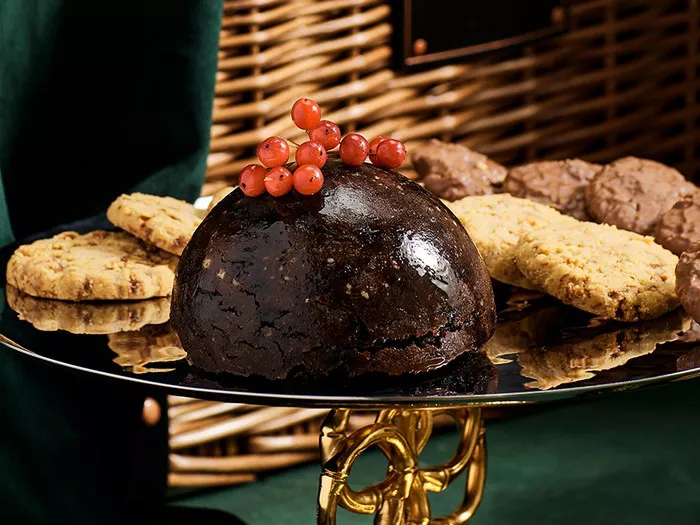The Christmas season is synonymous with joy, giving, and gathering. One of the most cherished traditions during this festive period is the preparation and enjoyment of a Christmas roast. This meal, often the centerpiece of holiday celebrations, is more than just food—it is a symbol of togetherness, history, and culture. A traditional Christmas roast encompasses a variety of dishes, each with its unique flavors and customs that have evolved over centuries.
Historical Origins of the Christmas Roast
The tradition of the Christmas roast can be traced back to ancient times. In medieval Europe, large feasts were held during the winter solstice to celebrate the end of the harvest and the beginning of longer days. These feasts often featured roasted meats as a centerpiece, a practice that continued as Christianity spread and incorporated these customs into Christmas celebrations.
In England, the Christmas roast became particularly popular during the Victorian era. Queen Victoria and Prince Albert’s adoption of the German Christmas tree and the promotion of family gatherings during the holiday season helped solidify the Christmas roast as a central part of the festivities. Over time, various meats and accompaniments were added, creating a diverse and rich culinary tradition.
The Main Event: Roasted Meats
The highlight of a traditional Christmas roast is the roasted meat. Depending on cultural and regional preferences, the type of meat can vary, but some of the most common choices include turkey, goose, beef, and ham.
Turkey
Turkey is perhaps the most iconic Christmas roast, especially in North America and the United Kingdom. Its popularity surged in the 16th century when King Henry VIII is said to have enjoyed turkey as part of his Christmas feast. The bird’s large size makes it ideal for feeding large gatherings, and its relatively mild flavor allows for a variety of seasonings and stuffing options.
A traditional roast turkey is often seasoned with herbs such as sage, thyme, and rosemary, and stuffed with a mixture of breadcrumbs, onions, celery, and sometimes sausage. The bird is then roasted until the skin is golden and crisp, and the meat is tender and juicy. Gravy, made from the turkey’s drippings, and cranberry sauce are classic accompaniments.
Goose
Before turkey became widespread, goose was the preferred choice for Christmas dinner in many European countries. Its rich, dark meat and higher fat content provide a distinct flavor that many find irresistible. Roasting a goose requires careful preparation to ensure the fat is rendered properly, resulting in crispy skin and succulent meat.
Traditional seasonings for goose include juniper berries, garlic, and thyme. The cavity is often filled with apples, onions, and prunes to enhance the flavor and keep the meat moist. A goose roast is typically served with red cabbage, potatoes, and a tangy fruit sauce, such as apple or red currant.
Beef
Roast beef is another popular choice, especially in the United Kingdom, where it has been a staple of Sunday roasts for centuries. A prime rib or beef tenderloin can make an impressive centerpiece for a Christmas meal. The key to a perfect roast beef lies in selecting a high-quality cut and cooking it to the desired level of doneness.
A traditional roast beef is seasoned simply with salt, pepper, and sometimes garlic. It is often served with Yorkshire pudding, a savory batter pudding that complements the meat’s rich flavor. Horseradish sauce and gravy made from the pan drippings are common accompaniments.
Ham
In many households, especially in the United States, a glazed ham is a staple of Christmas dinner. Ham’s salty and slightly sweet flavor, along with its ease of preparation, makes it a popular choice. A whole or half ham is often baked and glazed with a mixture of brown sugar, honey, mustard, and cloves.
The glaze forms a caramelized crust that enhances the ham’s flavor. Pineapple slices, cherries, and cloves are sometimes used as decorative elements that also add to the taste. Ham is typically served with sides such as mashed potatoes, green beans, and dinner rolls.
Side Dishes and Accompaniments
A traditional Christmas roast is not complete without an array of side dishes that complement the main course. These sides vary by region and family tradition but often include vegetables, starches, and festive touches.
Roast Potatoes
Crispy on the outside and fluffy on the inside, roast potatoes are a beloved accompaniment to any Christmas roast. They are usually parboiled before being roasted in the oven with fat, such as goose fat or olive oil, and seasoned with salt, pepper, and herbs like rosemary or thyme.
SEE ALSO: What Is a Good Appetizer to Bring to a Christmas Party
Stuffing
Stuffing, also known as dressing in some regions, is a staple of Christmas dinner. While it can be cooked inside the bird, many prefer to bake it separately to ensure a crispy top. Traditional stuffing ingredients include breadcrumbs, onions, celery, sage, and sometimes sausage or chestnuts.
Vegetables
A variety of vegetables are typically served with a Christmas roast. Common choices include Brussels sprouts, often cooked with bacon or chestnuts for added flavor, and carrots, which can be roasted with honey and thyme. Green beans, parsnips, and peas are also popular options.
Yorkshire Pudding
Particularly common with roast beef, Yorkshire pudding is a savory pastry made from a simple batter of eggs, flour, and milk. The batter is poured into hot fat and baked until puffy and golden. It is traditionally served with gravy and helps soak up the delicious meat juices.
Cranberry Sauce
A tart and slightly sweet cranberry sauce is a classic accompaniment to roast turkey. It is made by simmering fresh or dried cranberries with sugar and sometimes orange zest or juice until the berries burst and form a thick sauce. The tangy flavor balances the richness of the meat.
Gravy
Gravy is essential for a Christmas roast, providing moisture and flavor to the meat and sides. It is typically made from the drippings of the roasted meat, combined with flour or cornstarch to thicken, and sometimes enhanced with wine, stock, and seasonings.
Desserts
No Christmas meal is complete without dessert. Traditional Christmas desserts are rich and indulgent, often featuring warm spices, dried fruits, and festive decorations.
Christmas Pudding
Also known as plum pudding, Christmas pudding is a dense, steamed dessert made from suet, breadcrumbs, dried fruits, and spices. It is traditionally made weeks or even months in advance to allow the flavors to develop. On Christmas Day, it is steamed again, doused in brandy, and set alight before serving. It is often accompanied by brandy butter, cream, or custard.
Mince Pies
Mince pies are small, sweet pastries filled with mincemeat, a mixture of dried fruits, spices, and sometimes a touch of brandy or rum. The pastry is typically shortcrust, and the pies are often dusted with powdered sugar. They are a favorite treat throughout the holiday season.
Yule Log
The Yule log, or Bûche de Noël, is a traditional French Christmas dessert. It is a sponge cake rolled into a cylinder and filled with cream or buttercream. The outside is covered with chocolate icing and decorated to resemble a log, complete with meringue mushrooms and powdered sugar to mimic snow.
Drinks
The beverages served with a Christmas roast are as important as the food itself. They range from festive cocktails to traditional warm drinks that add to the holiday cheer.
Mulled Wine
Mulled wine, or glühwein, is a warm, spiced wine traditionally enjoyed during the Christmas season. It is made by heating red wine with spices such as cinnamon, cloves, and nutmeg, along with sugar and citrus fruits. The result is a fragrant and warming drink perfect for cold winter nights.
Eggnog
Eggnog is a rich, creamy beverage made from milk, cream, sugar, beaten eggs, and often a splash of rum or brandy. It is typically garnished with a sprinkle of nutmeg or cinnamon. Eggnog can be served hot or cold and is a quintessential Christmas drink in many households.
Wassail
Wassail is a traditional English hot drink made from mulled cider or ale, sugar, spices, and sometimes fruit. It is associated with the custom of wassailing, where people would go door-to-door singing and offering a drink from the wassail bowl in exchange for gifts or food.
Modern Variations and Global Influences
While the traditional Christmas roast has deep roots in European customs, modern celebrations reflect a blend of global influences and contemporary tastes. In many households, the Christmas meal might include elements from different cultures or feature new and innovative dishes.
Vegetarian and Vegan Options
As dietary preferences shift, many people are opting for vegetarian or vegan alternatives to the traditional Christmas roast. Nut roasts, made from a mixture of nuts, grains, and vegetables, are a popular choice. Other options include stuffed squash, lentil loaf, and mushroom Wellington.
International Flavors
Incorporating international flavors into the Christmas meal can add a unique twist to traditional dishes. For example, a turkey might be seasoned with Mexican spices and served with mole sauce, or a ham could be glazed with Asian-inspired ingredients like soy sauce and ginger. Side dishes can also be diversified with additions like Italian antipasti, Middle Eastern mezze, or Japanese tempura.
Creative Desserts
While traditional desserts like Christmas pudding and mince pies remain popular, many people enjoy experimenting with new recipes. Desserts such as pavlova, trifle, or even a festive-themed cheesecake can provide a refreshing change from the norm.
Conclusion
A traditional Christmas roast is more than just a meal—it is a celebration of heritage, family, and the joy of the holiday season. Whether it is the succulent roast turkey, the rich and flavorful goose, the hearty roast beef, or the sweet and savory ham, the Christmas roast brings people together to share in the warmth and generosity of the season. With an array of side dishes, desserts, and drinks to complement the main course, the Christmas roast continues to be a cherished tradition that evolves with each passing year, reflecting the diverse and ever-changing tapestry of our culinary world.
Related Topics:























